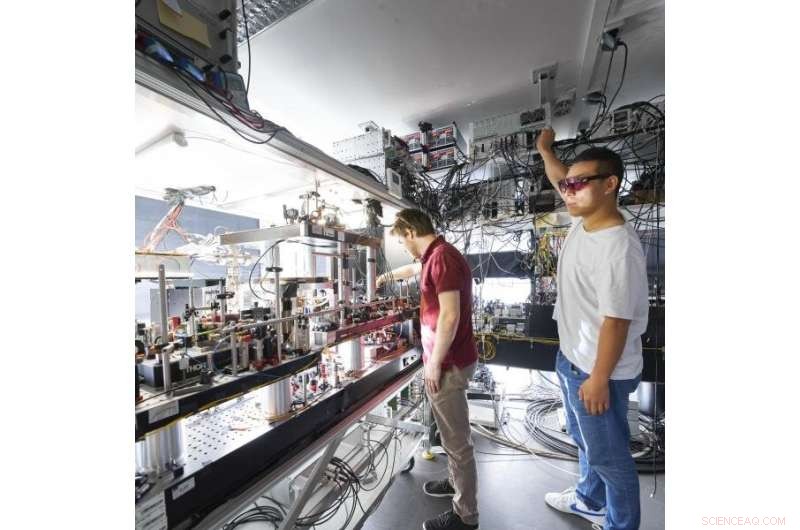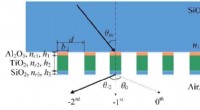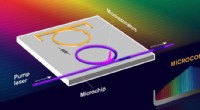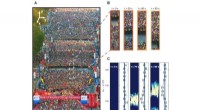Forskere opnår rekordforviklinger af kvantehukommelser

Skematisk af forsøgsopstillingen. I hver knude, placeret i bygninger 400 m fra hinanden, en enkelt 87 Rb-atom er indlæst i en optisk dipolfælde. Begge atomer exciteres synkront til tilstanden 5 2 P3/2 |F′=0, mF′ =0⟩ for at generere atom-foton sammenfiltring i det efterfølgende spontane henfald. De enkelte fotoner, der udsendes ved en bølgelængde på 780 nm, opsamles ved hjælp af højnumeriske blændemål og kobles til single-mode fibre, der fører til QFC-enhederne. Der konverteres de til telekommunikationsbølgelængde (λ = 1.517 nm) ved differensfrekvensgenerering i en periodisk polet lithiumniobat (PPLN) bølgeleder placeret i en Sagnac interferometer type opsætning, en sådan konfiguration opretholder fuldt ud fotonens polarisationskvantetilstand. De konverterede fotoner ledes til en mellemstation af fiberforbindelser med længder på op til 16,5 km, hvor sammenfiltringen er byttet til atomerne af en BSM. Efter vellykket generering af atom-atom-sammenfiltring analyseres atomerne uafhængigt af en udlæsningsimpuls, hvis polarisering, indstillet af en halvbølgeplade (HWP) og kvartbølgeplade (QWP), definerer måleindstillingen. PC, polarisationscontrollere. Kredit:Nature (2022). DOI:10.1038/s41586-022-04764-4
Et netværk, hvor datatransmission er helt sikker mod hacking? Hvis fysikerne har deres vilje, vil dette blive til virkelighed en dag ved hjælp af det kvantemekaniske fænomen kendt som entanglement. For sammenfiltrede partikler er reglen:Hvis du måler tilstanden af en af partiklerne, så kender du automatisk tilstanden af den anden. Det gør ingen forskel, hvor langt væk de sammenfiltrede partikler er fra hinanden. Dette er en ideel tilstand til at transmittere information over lange afstande på en måde, der gør aflytning umulig.
A team led by physicists Prof. Harald Weinfurter from LMU and Prof. Christoph Becher from Saarland University have now coupled two atomic quantum memories over a 33-kilometer-long fiber optic connection. This is the longest distance so far that anyone has ever managed entanglement via a telecom fiber.
The quantum mechanical entanglement is mediated via photons emitted by the two quantum memories. A decisive step was the researchers' shifting of the wavelength of the emitted light particles to a value that is used for conventional telecommunications. "By doing this, we were able to significantly reduce the loss of photons and create entangled quantum memories even over long distances of fiber optic cable," says Weinfurter.
Generally speaking, quantum networks consist of nodes of individual quantum memories—such as atoms, ions, or defects in crystal lattices. These nodes are able to receive, store, and transmit quantum states. Mediation between the nodes can be accomplished using light particles that are exchanged either over the air or in a targeted manner via fiber optic connection. For their experiment, the researchers use a system comprised of two optically trapped rubidium atoms in two laboratories on the LMU campus. The two locations are connected via a 700-meter-long fiber optic cable, which runs underneath Geschwister Scholl Square in front of the main building of the university. By adding extra fibers on coils, connections of up to 33 kilometers in length can be achieved.
A laser pulse excites the atoms, after which they spontaneously fall back into their ground state, each thereby emitting a photon. Due to the conservation of angular momentum, the spin of the atom is entangled with the polarization of its emitted photon. These light particles can then be used to create a quantum mechanical coupling of the two atoms. To do this, the scientists sent them through the fiber optic cable to a receiver station, where a joint measurement of the photons indicates an entanglement of the quantum memories.

Credit:Jan Greune
However, most quantum memories emit light with wavelengths in the visible or near-infrared range. "In fiber optics, these photons make it just a few kilometers before they are lost," explains Christoph Becher. For this reason, the physicist from Saarbrücken and his team optimized the wavelength of the photons for their journey in the cable. Using two quantum frequency converters, they increased the original wavelength from 780 nanometers to a wavelength of 1,517 nanometers.
"This is close to the so-called telecom wavelength of around 1,550 nanometers," says Becher. The telecom band is the frequency range in which the transmission of light in fiber optics has the lowest losses. Becher's team accomplished the conversion with an unprecedented efficiency of 57%. At the same time, they managed to preserve the quality of the information stored in the photons to a high degree, which is a condition of quantum coupling.
"The significance of our experiment is that we actually entangle two stationary particles—that is to say, atoms that function as quantum memories," says Tim van Leent, lead author of the paper published in Nature . "This is much more difficult than entangling photons, but it opens up many more application possibilities."
The researchers think that the system they developed could be used to construct large-scale quantum networks and for the implementation of secure quantum communication protocols. "The experiment is an important step on the path to the quantum internet based on existing fiber optic infrastructure," says Harald Weinfurter. + Udforsk yderligere
On the way to quantum networks
 Varme artikler
Varme artikler
-
 Hvad er en høj eller lav aflæsning i barometrisk tryk?Barometrisk tryk, en indikator for vægten af luftsøjlen, spænder fra et historisk højde på 32,01 inches til et lavmål på hele tiden på 25,9 inches. Elektroniske barometre er nu tilgængelige ud ov
Hvad er en høj eller lav aflæsning i barometrisk tryk?Barometrisk tryk, en indikator for vægten af luftsøjlen, spænder fra et historisk højde på 32,01 inches til et lavmål på hele tiden på 25,9 inches. Elektroniske barometre er nu tilgængelige ud ov -
 Forenklet modal metode undersøger dybere i brede og højeffektive gitreSkematisk af højeffektiv trelags transmissionsrist. Kredit:SIOM På grund af den fremragende spredningsevne, diffraktionsgitre spiller en vigtig rolle i udbredte felter lige fra spektrometre til kv
Forenklet modal metode undersøger dybere i brede og højeffektive gitreSkematisk af højeffektiv trelags transmissionsrist. Kredit:SIOM På grund af den fremragende spredningsevne, diffraktionsgitre spiller en vigtig rolle i udbredte felter lige fra spektrometre til kv -
 Ny mikrokam kunne hjælpe med at opdage exoplaneter og opdage sygdommeForskere ved Chalmers Tekniske Universitet, Sverige, præsentere en mikrokam på en chip - baseret på to mikroresonatorer i stedet for en. Det er en sammenhængende, afstembar og reproducerbar enhed med
Ny mikrokam kunne hjælpe med at opdage exoplaneter og opdage sygdommeForskere ved Chalmers Tekniske Universitet, Sverige, præsentere en mikrokam på en chip - baseret på to mikroresonatorer i stedet for en. Det er en sammenhængende, afstembar og reproducerbar enhed med -
 En model til beskrivelse af menneskemængdenes hydrodynamikBillede A:Billede af startområdet for Bank of America Chicago Marathon 2016. Billede B:Zoom på området indrammet af A, viser løbsarrangørernes bevægelsessekvens (gule veste), når de leder løbere mod s
En model til beskrivelse af menneskemængdenes hydrodynamikBillede A:Billede af startområdet for Bank of America Chicago Marathon 2016. Billede B:Zoom på området indrammet af A, viser løbsarrangørernes bevægelsessekvens (gule veste), når de leder løbere mod s
- Rekordstærk astronaut begejstret med bonustid i rummet
- Opdagelse af lænket skelet i en grøft:Slaveri i det romerske Storbritannien
- Marts 2020 blandt de hotteste nogensinde:EU
- Sri Lankas havkatastrofe forværres, efterhånden som miljøafgifterne stiger
- Jeff Bezos vælger en kvindelig rumfartspioner til at lancere sammen med ham
- Husdyr går tilbage til den neolitiske periode med ledningsnet, der blev identificeret i Finland


